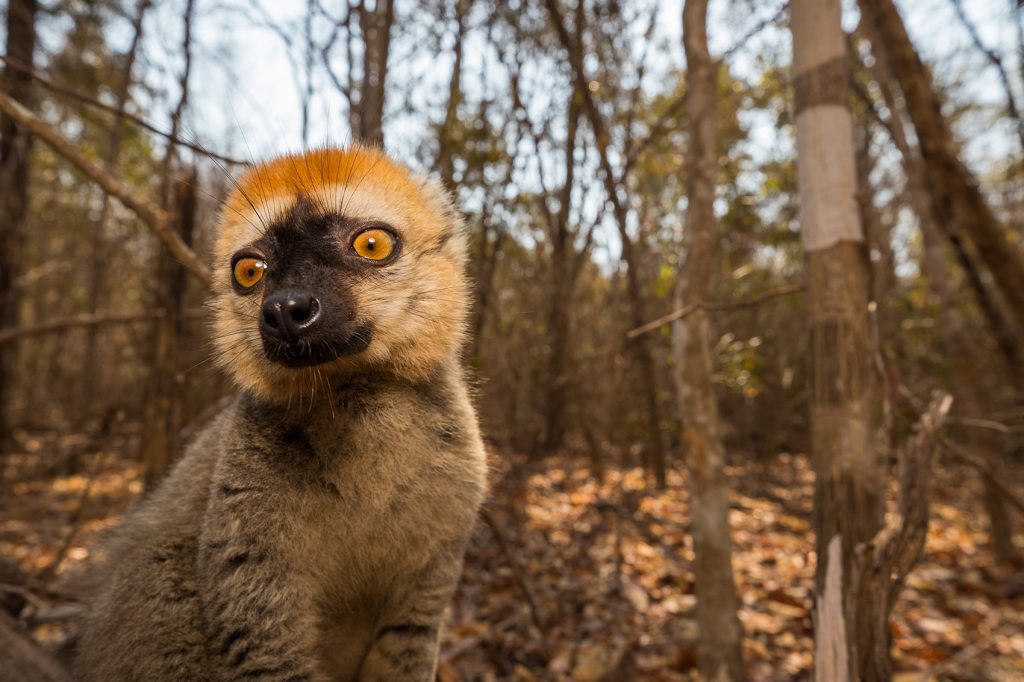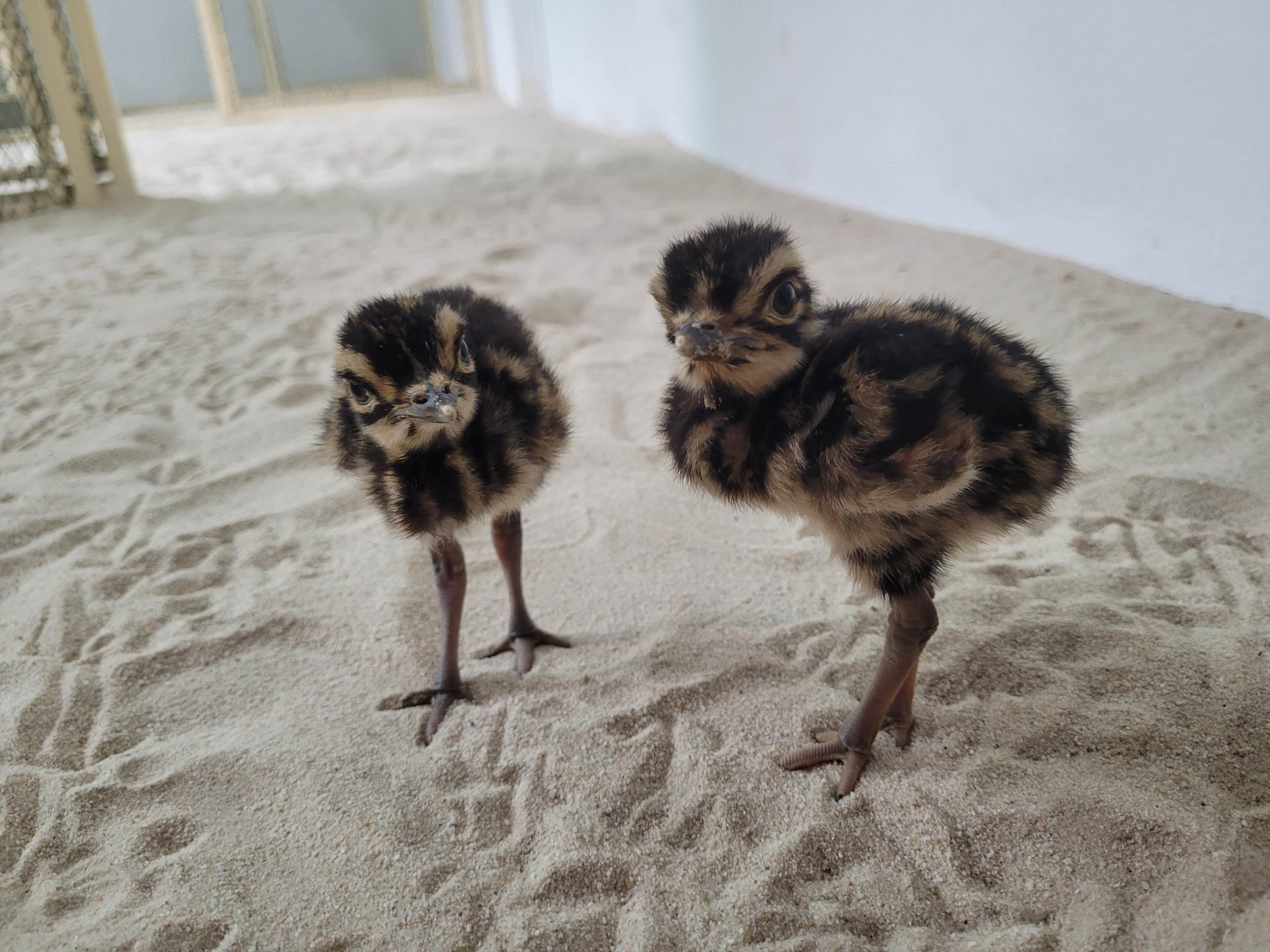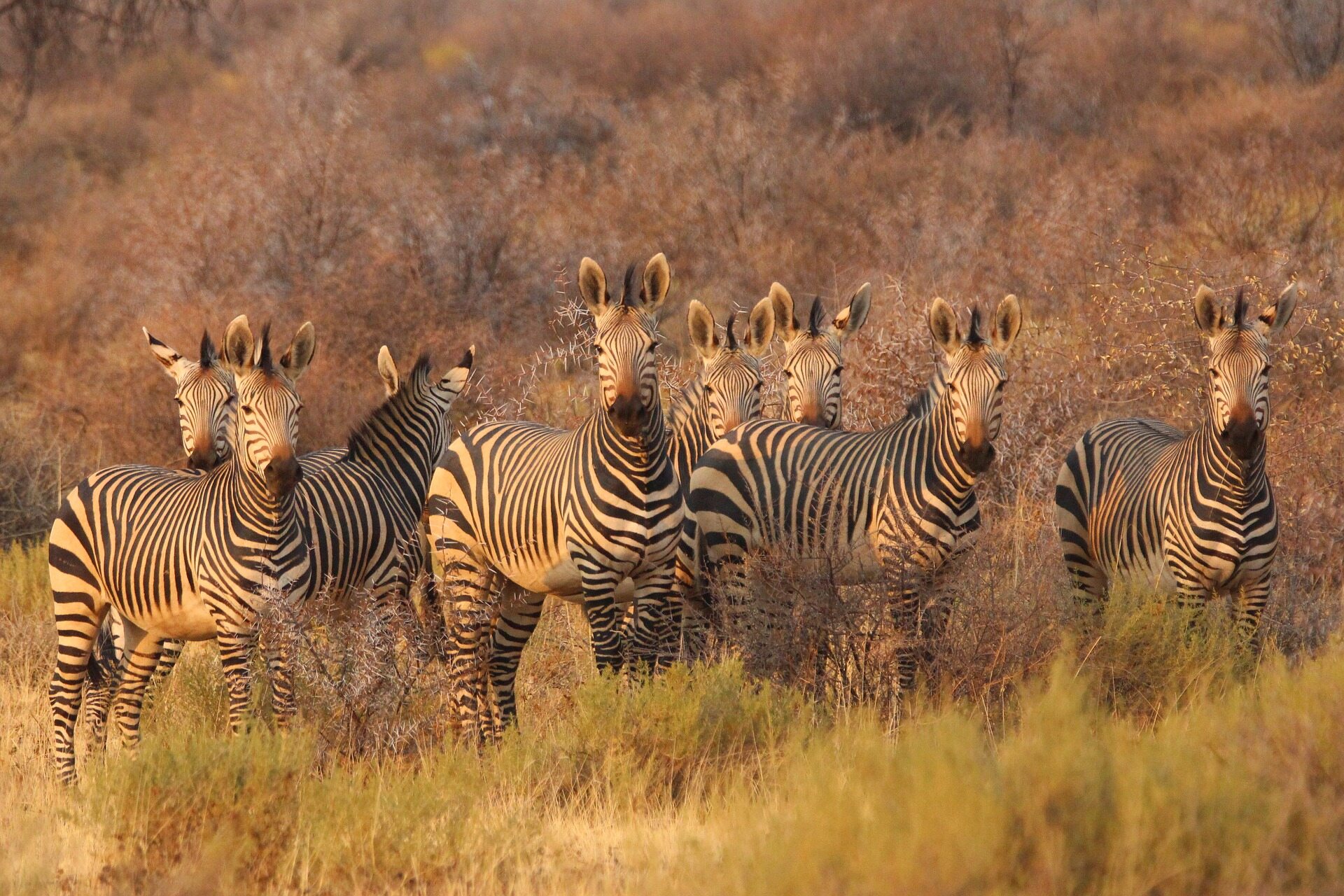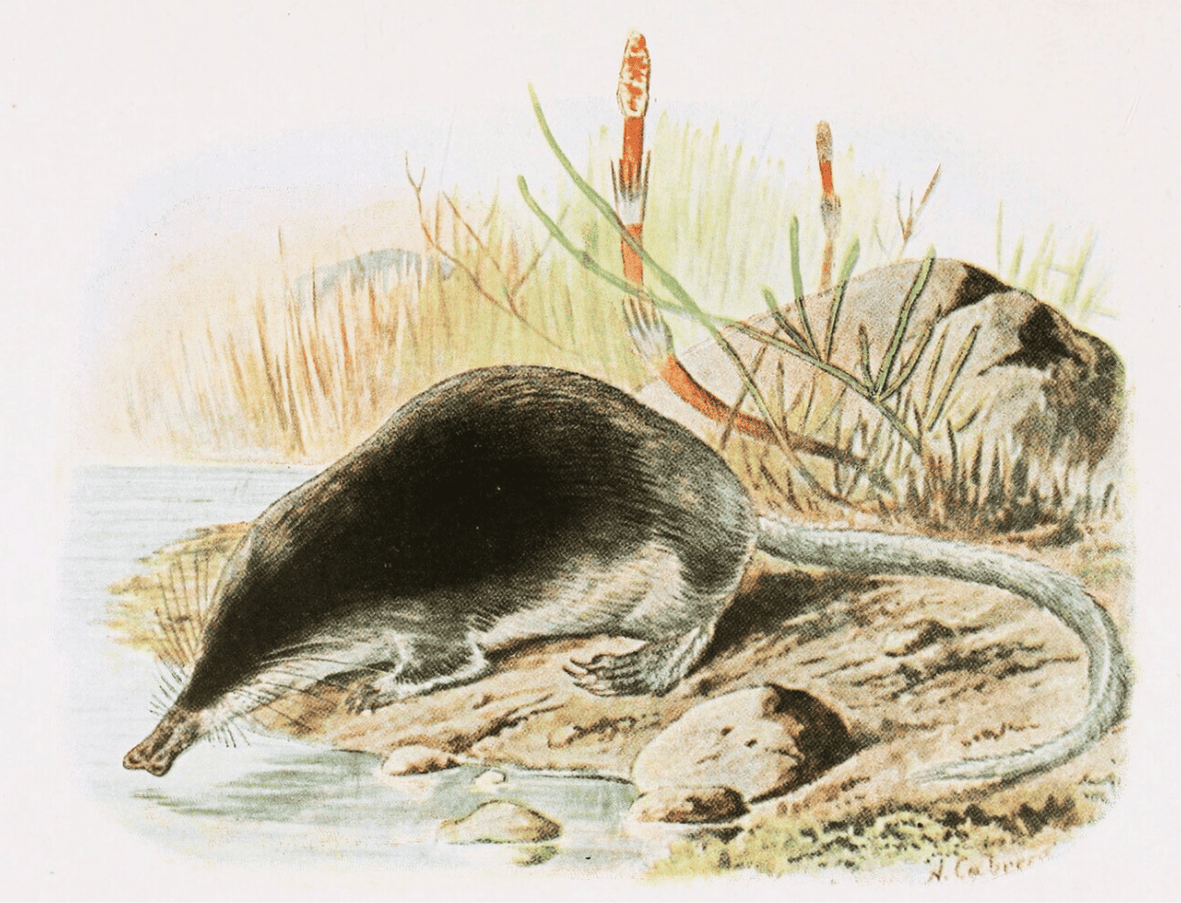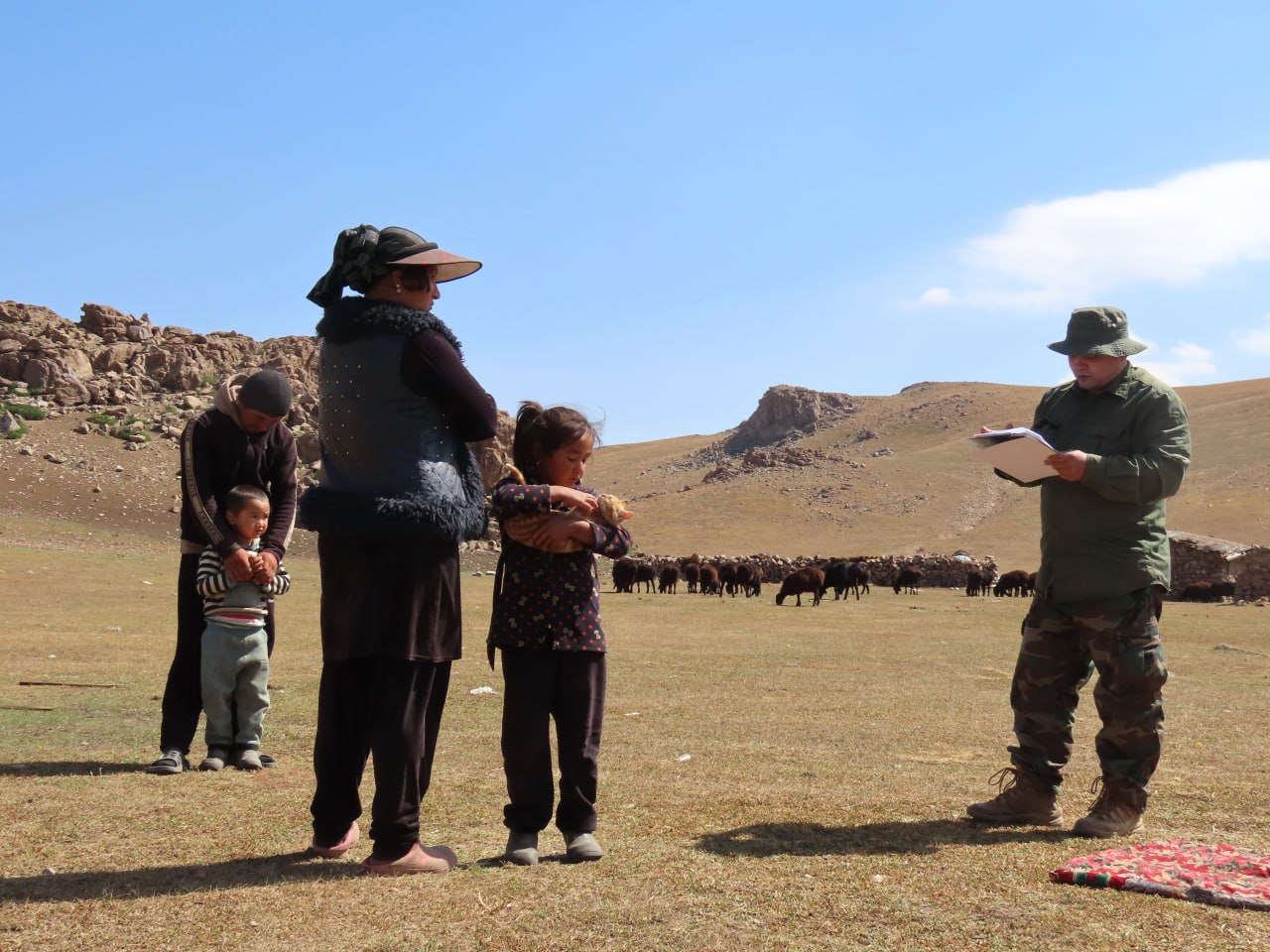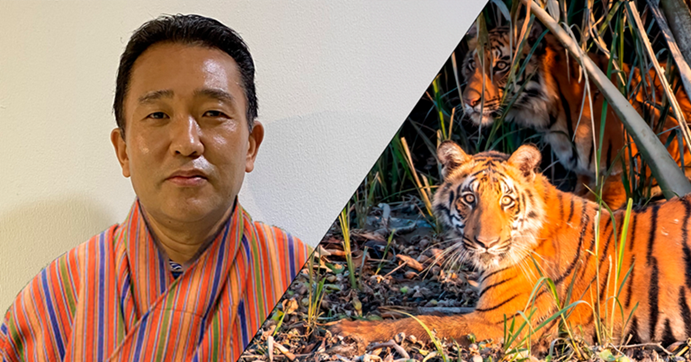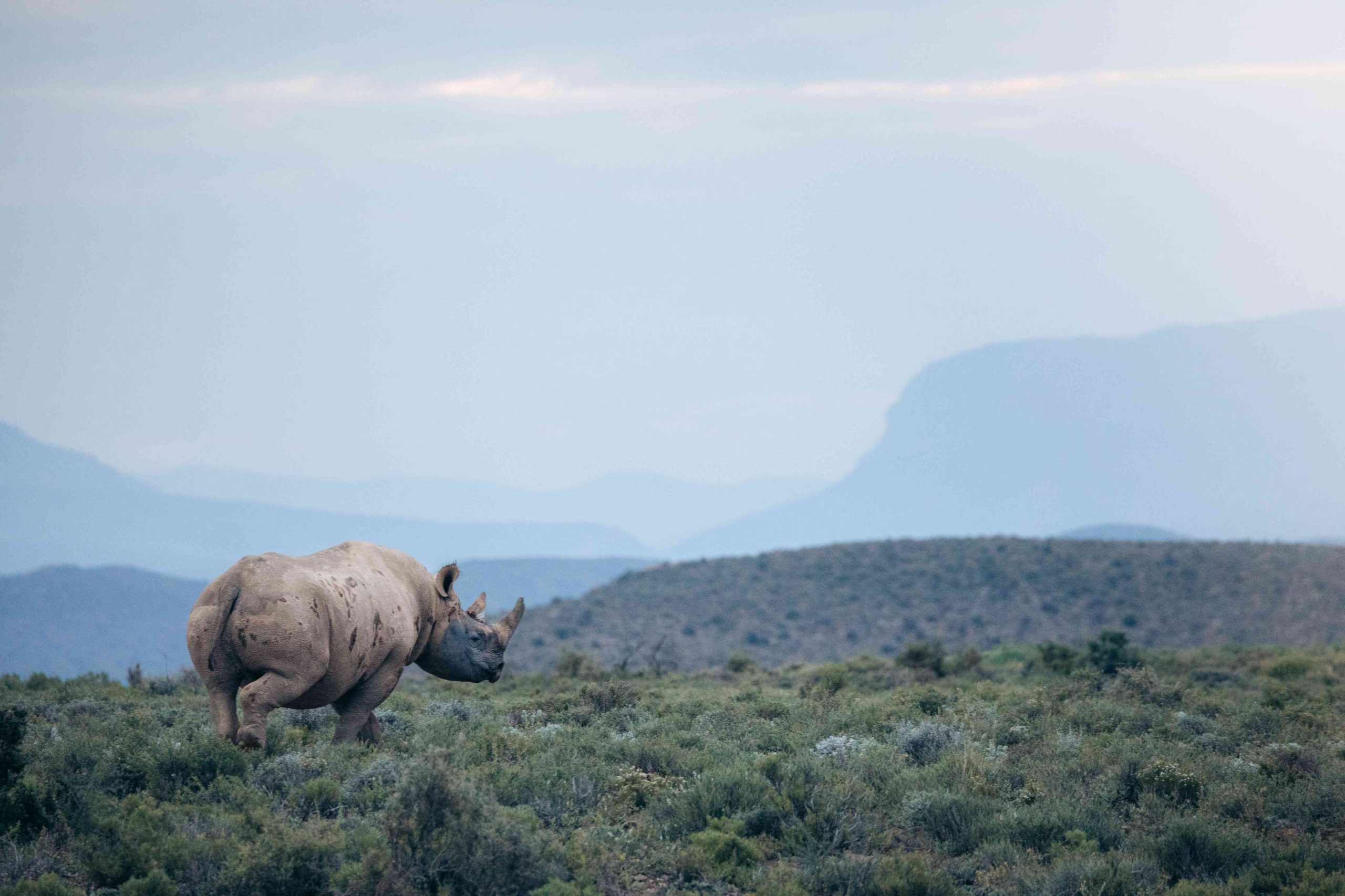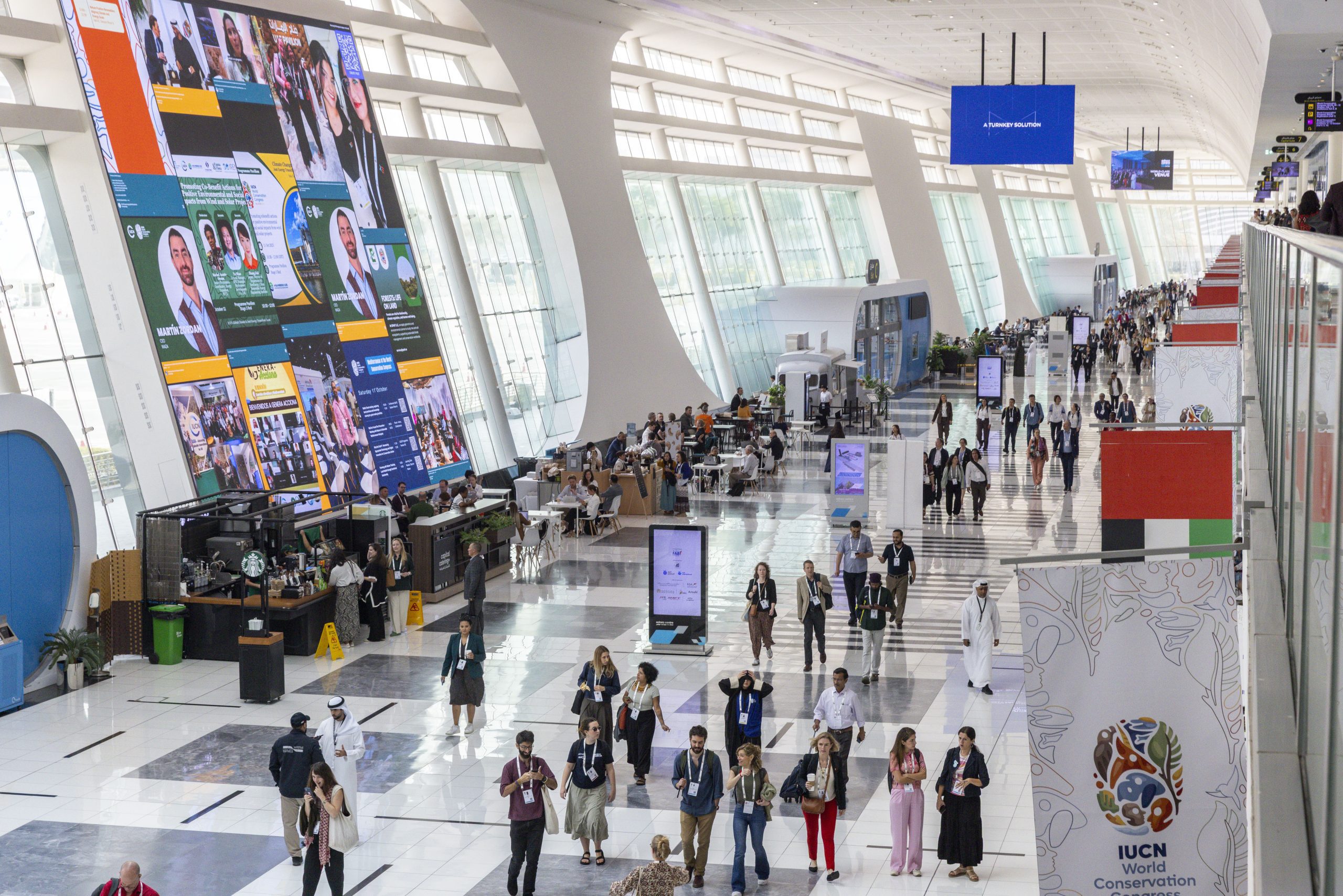IUCN has launched a second call for proposals under its SOS Lemurs initiative to support targeted conservation action for Madagascar’s threatened lemurs. The call is open until Wednesday 9 July 2025 at 14:00 PM CEST.
Related content
Primary tools and resources
Agriculture and conservation
In 2021, IUCN launched the IUCN Flagship Report Series, to help demonstrate the importance of conserving nature for human well-being and all life on Earth. This report, the second in the series, focuses on agriculture and nature. The interactions, synergies, and tradeoffs between the two sit at the heart of the 2030 Agenda for Sustainable Development, which calls for ending hunger and ensuring food security while also mandating the protection and restoration of nature. Whether the two can be achieved simultaneously, and if so how, are crucial questions for humanity and our planet. IUCN therefore explores the positive and negative relationships between agriculture and nature conservation and mobilises new modelling approaches to examine both imperatives within a range of realistic policies.
FAO Code of Conduct for Responsible Fisheries (CCRF)
The purpose of 1995 FAO Code of Conduct is to set international standards of behaviour for responsible practices to ensure the effective conservation, management and development of aquatic resources, the ecosystem, and biodiversity. These standards may be implemented at the national, subregional, and regional levels.
The Global Strategy for Plant Conservation (GSPC)
The GSPC – A Plan to Save the World’s Plant Species – highlights the importance of plants and the ecosystem services they provide for all life on earth, and aims to ensure their conservation. The GSPC includes 16 targets for plant conservation. An updated GSPC was formally adopted at the 10th meeting of the Conference of the Parties to the CBD.
Nagoya Protocol on Access and Benefit-sharing
The Nagoya Protocol on Access to Genetic Resources and the Fair and Equitable Sharing of Benefits Arising from their Utilization to the Convention on Biological Diversity. is a supplementary agreement to the Convention on Biological Diversity. It is a transparent legal framework for the effective implementation of the fair and equitable sharing of benefits arising out of the utilization of genetic resources, thereby contributing to the conservation and sustainable use of biodiversity. The Nagoya Protocol sets out core obligations for its contracting Parties to take measures in relation to access to genetic resources, benefit-sharing and compliance. The Nagoya Protocol addresses traditional knowledge associated with genetic resources with provisions on access, benefit-sharing, and compliance. It also addresses genetic resources where indigenous and local communities have the established right to grant access to them. Contracting Parties should take measures to ensure these communities’ free, prior, informed consent, keeping in mind community laws and procedures as well as customary use and exchange. The Nagoya Protocol entered into force on 12 October 2014.
How to use
The Nagoya Protocol is available in English, French, Spanish, Arabic, Chinese, and Russian at: https://www.cbd.int/abs
Nagoya Protocol Factsheets on access and benefit sharing can be downloaded at: https://www.cbd.int/abs/factsheet
WILDMEAT Use Database
The aim of the WILDMEAT Use Database is to ensure that efforts to manage wild meat resources sustainably are based on the best available evidence. The Database holds three types of data, on wild meat consumption, hunting offtakes, and market sales in a standardised format within one database. This allows data from many different sites and studies to be combined and compared, to track changes in wildmeat harvest characteristics and use, and to evaluate the effectiveness of management and policy interventions. Data can be shared under different license agreements, from full open access to access that is dependent on some terms and conditions.
The WILDMEAT Use Database – User Guide provides assistance on using the database, including descriptions of the data structure, metadata descriptions, data limitations, and other useful information. A WILDMEAT Toolkit with guidance on indicators, theories of change, and data collection methods is under development.
How to use
- To WILDMEAT database can be searched through the Database Explorer and the User Guide downloaded at: https://www.wildmeat.org/database/
- The WILDMEAT Toolkit can be accessed at: https://www.wildmeat.org/toolkit/.
- To contribute data and view the options for sharing data contact: info@wildmeat.org.
IUCN Guidelines for Assessing Species’ Vulnerability to Climate Change
Several methods have been developed for climate change vulnerability assessment (CCVA) of species. There is no single ‘correct’ or established way to carry out CCVA of species and these guidelines aim to assist conservation practitioners to interpret and use the complex and often inconsistent CCVA literature. The guidelines indicate sensible and defensible approaches, in the context of the current state of knowledge and available resources.
The guidelines outline some of the terms commonly used in climate change vulnerability assessment (CCVA) and describe three dominant CCVA approaches, namely correlative (niche-based), mechanistic, and trait-based approaches. Advice is provided on setting clear, measurable objectives and selecting CCVA approaches and appropriate methods. Guidance on using and interpreting CCVA results includes suggestions on data sources and their use, working with knowledge gaps and uncertainty, approaches for use in challenging contexts, and incorporating indirect climate change impacts such as habitat transformation.
It is hoped that the guidelines will promote standardization of CCVA terminology and provide a useful resource for those wishing to carry out CCVA at species, site, or site-network scales.
The guidelines are structured to provide (i) background information on definitions and metrics associated with CCVA; (ii) a discussion on identifying CCVA objectives; (iii) core guidance on selecting and applying appropriate methods; (iv) sections on interpreting and communicating results; (v) using results in IUCN Red List assessments; (vi) ways to address the many sources of uncertainty in CCVAs. A final section explores future directions for CCVAs and research needs. The guidelines also highlight 10 case studies that provide worked examples of CCVAs covering the range of methods described.
Global invasive species database (GISD)
The Global Invasive Species Database (GISD) is a free source of information about invasive alien species. It covers all taxonomic groups from micro-organisms to animals and plants, in all ecosystems. The GISD aims to increase public awareness about introduced species that negatively impact biodiversity, and to facilitate effective prevention and management activities by providing easy access to authoritative invasive species information.
The Franklinia Foundation – for Conservation Threatened Trees
The Franklinia Foundation is a private foundation under Swiss law established in 2005 that provides financial support for nature conservation projects. Its objective is to ensure the conservation of threatened tree species throughout the world and to improve their conservation status.
Darwin Initiative
The Darwin Initiative is a UK government grants scheme that helps conserve biodiversity and support the communities that live alongside it through locally led projects worldwide. It is one of the Biodiversity Challenge Funds (BCFs) – the collective name for three of the UK Government’s competitive grants that also includes the Illegal Wildlife Trade Challenge Fund and Darwin Plus, aimed at conserving biodiversity and safeguarding the environment for local people.
Successful Darwin Initiative projects are likely to include:
- delivering outputs that will achieve both biodiversity conservation and multidimensional poverty reduction
- demonstrated an understanding of GESI within their context, and effectively reflected this in their approach to deliver sustained outcomes
- enhancing the capability and capacity of national and local partners and stakeholders, to help ensure a project’s long-term legacy
- strengthening, promotion and use of evidence to inform and scale the action
- the implementation of a novel or significantly improved approach
- scalable approaches that have the potential to deliver greater impact
Since 1993, the Darwin Initiative has awarded over £230m to more than 1,275 projects across 159 countries.
Strategic Environmental Assessment (SEA)
Strategic Environmental Assessment (SEA) is one of the main tools available to achieve integration of the principles of sustainable development into country policies and programmes, involving a range of analytical and participatory approaches. SEAs are becoming more urgent and necessary but moving from concept to action and towards results has varied. The OECD has produced guidance notes that promote a more harmonised, effective approach to SEA, working alongside key donor and development agencies. The Guidance explains the benefits of using SEA in development co-operation, sets out key steps for its application based on recent experiences, and presents the nine most interesting case studies of SEA in progress.
IUCN Red List of Threatened Species
The IUCN Red List of Threatened Species (the Red List) is the globally recognised standard on assessing extinction risk. Red List assessments are used by the Convention on Biological Diversity, CITES, other inter-governmental agreements, national governments, and conservation planners. The Red List assigns species into one of 8 categories based on 5 criteria, all with quantitative thresholds. The three highest categories of threat – Critically Endangered, Endangered, Vulnerable – are collectively considered ‘Threatened’. The Red List process has been formalized to support objectivity and scientific rigour. Red List assessments are carried out by SSC Red List Authorities, Red List Partners, IUCN staff, and regional and national agencies. In addition, Red List assessments provide a compendium of information on species, (taxonomy, geographic range, population, habitat and ecology, threats, conservation actions). The Red List operates at global, regional, and national levels. Guidelines for application at national or regional levels have been developed and the National Red List Working Group provides additional support.
Red List Authorities have been established for all major taxonomic groups included on the IUCN Red List. In most cases, the RLA is a sub-group within an IUCN SSC Specialist Group responsible for the species, groups of species or species within a specific geographic area. There are some exceptions; for example, BirdLife International is the designated RLA for all birds.
The process is guided by Rules of Procedure, supported by guidelines on application of the Red List Categories and Criteria, the Species Information Service (SIS) data entry and management system, and certification for assessors and RL trainers. All these materials can be downloaded, free, from the Red List website. A free, online training course for Red List assessors, is available.
Species can be assessed for the Red List at global, regional, and national levels. Guidelines for the Regional (and national) Application of the Categories and Criteria have been developed and support for development of national Red Lists is available from the National Red List Working Group.
How to use
- To check the global Red List status of a species and access the supporting information, visit the species assessment page on the Red List website
- To download the Red List Categories and Criteria, Guidelines, Rules of Procedure, and Guidelines for Application at Regional Level go the Red List resources
- To initiate or to contribute to a global assessment, contact the Chair of the relevant IUCN SSC Specialist Group or Red List Authority, for birds, see BirdLife International
- For taxonomic groups not listed, contact the relevant IUCN SSC Conservation Committee: Marine, Invertebrate, Plant, Fungi, Freshwater, Red List, Standards and Petitions.
- To develop a National Red List for a species or group of species visit the National Red List Working Group
- To obtain details or register for an online Red List training course: https://www.iucnredlist.org/resources/online
Guidelines on harvesting threatened species
Societies around the globe harvest wild species, to a greater or lesser extent, for food, building materials, healthcare, medicines, pest control, ornamentation, income, recreation, and cultural and spiritual purposes. While this use of wild species directly contributes to the well-being of billions of people globally, over-exploitation of wild species is one of the key drivers of biodiversity loss. The IUCN Guidelines on harvesting threatened species advise decision-makers on whether, how and what to harvest to ensure the sustainable use of threatened animal, plant and fungal species. Drawing on insights from the IPBES Sustainable Use Assessment, they complement and expand on existing guidance and tools, such as the Guidelines for the Appropriate Use of IUCN Red List Data in Harvesting of Threatened Species and recent CITES guidance on the conduct of Non-Detriment Findings.
Guidelines for the application of IUCN Red List of Ecosystems categories and criteria
The IUCN Red List of Ecosystems is a global framework for monitoring the status of ecosystems. It is part of the growing toolbox for assessing risks to biodiversity and aims to support conservation, resource use, and management decisions by identifying ecosystems most at risk of biodiversity loss. The basis of the IUCN Red List of Ecosystems is the IUCN Red List of Ecosystems Categories and Criteria, a set of eight categories and five criteria that provide a consistent method for assessing the risk of ecosystem collapse. These Guidelines assist correct implementation of the IUCN Red List of Ecosystems Categories and Criteria by providing information on the development of the protocol and a detailed overview of the scientific foundations supporting the categories and criteria.
The CBD Ecosystem Approach (EA)
The Convention on Biological Diversity’s Ecosystem Approach is a strategy for the integrated management of land, water, and living resources to promote conservation and sustainable use in an equitable way. It is the primary framework for such action under the CBD and it contains 12 core principles. The Ecosystem Approach Sourcebook contains a Beginner’s Guide, Advanced Guide, Tools and resources, a Case Study Database, and Operational guidance for applying the 12 principles of the Ecosystem Approach.
How to use
To access the EA Sourcebook and operational guides: https://www.cbd.int/ecosystem/
To download and subscribe to the CBD Ecosystem Newsletter: https://www.cbd.int/ecosystem/ea-newsletters/
Fonseca Species Conservation Fund (FSCF)
The Fonseca Species Conservation Fund (FSCF) was established in 2024 by the Global Environment Facility (GEF) and Re:wild to honor the passion of the late Gustavo Fonseca, long-standing GEF director of programs, for species conservation and building capacity of the next generation of conservationists.
The FSCF draws on the expertise of IUCN Species Survival Commission Specialist Groups and other key partners to ensure all funding goes toward priority projects. Through the FSCF, grantees will access funding support, the expertise of the selection committees, and connections with partner organizations.
Global Taxonomy Initiative
The Global Taxonomy Initiative (GTI) was established by the CBD to address the lack of taxonomic information and expertise available in many parts of the world, and thereby to improve decision-making in conservation, sustainable use, and equitable sharing of the benefits derived from genetic resources. The GTI was developed by governments under the Convention on Biological Diversity and is implemented by governments, non-government and international organizations, taxonomists, and institutions.
The GTI is specifically intended to support implementation of the work programmes of the Convention on its thematic and cross-cutting issues. The Guide to the GTI includes an introduction, the programme of work, and links to further information. The European GTI Toolkit is a comprehensive tool that covers GTI topics in further detail.
International Treaty on Plant Genetic Resources for Food and Agriculture (ITPGRFA)
The Treaty was developed by FAO. The objectives of the Treaty are the conservation and sustainable use of all plant genetic resources for food security and agriculture, and the fair and equitable sharing of the benefits arising out of their use. The Treaty puts 64 of the most important crops that together account for 80% of the food derived from plants into an easily accessible global pool of genetic resources that is freely available to potential users in the Treaty’s ratifying nations for some uses. The Treaty ensures that access to genetic resources already protected by international property rights is consistent with international and national laws.
How to use
The Treaty and further information can be accessed at: https://www.fao.org/plant-treaty/en/
The capacity development strategy of the international treaty 2023–2030 are available at: https://www.fao.org/3/nk298en/nk298en.pdf
Transboundary conservation : a systematic and integrated approach
Approximately one-third of all terrestrial high-biodiversity sites straddle national land borders, yet few man-made boundaries are fixed, and international boundaries often alter over time or disappear altogether. This publication makes the compelling case for transboundary conservation approaches and promotes an array of innovative methods based on contemporary principles. It has been developed primarily to provide transboundary conservation managers with advice on how to work more effectively and how to address the challenges that are specific to transboundary conservation.
Living Planet Index (LPI)
The Living Planet Index measures the state of the world’s biodiversity based on population trends of vertebrate species from terrestrial, freshwater, and marine habitats. The LPI has been adopted by the Convention of Biological Diversity (CBD) as an indicator of progress towards its targets. The LPI is compiled by WWF and ZSL based on trends in thousands of population time-series data collected from monitored sites around the world. The Living Planet Database contains population time-series data on the abundance of tens of thousands of vertebrate species between 1970 and 2021. It is publicly available, except for some confidential records that cannot be shared.
How to use
- The annual Living Planet Report can be downloaded at: https://www.wwf.org.uk/our-reports/living-planet-report
- The latest results and the technical supplement are available at: https://www.livingplanetindex.org/
- Data in the Living Planet Database can be searched or downloaded at:
African Wildlife Poisoning Database
The Vulture Specialist Group of the IUCN Species Survival Commission gathers and collates data on historical and current incidents of wildlife poisoning to assess the scope and impact of this threat to vultures and other scavenging birds and wildlife on the African continent. The Database is accompanied by a map of poisoning incidents in Africa. A webform and a data submission template have been designed to facilitate simple uploading of records of poisoning incidents.
Global Environmental Facility
We support developing countries’ work to address the world’s most pressing environmental issues. We organize our work around five focal areas – biodiversity loss, chemicals and waste, climate change, international waters, and land degradation – and take an integrated approach to support more sustainable food systems, forest management, and cities.
IUCN Red List index : guidance for national and regional use. Version 1.1
The RLI monitors trends in extinction risk over time and is based on the IUCN Red List of Threatened Species. It tracks the conservation status of major species groups, and has been applied so far to birds, mammals, cycads, amphibians, corals. The data can be disaggregated by region, or country.
How to use
For details of the RLI process and to see results: https://www.iucnredlist.org/assessment/red-list-index
International policy framework for blue carbon ecosystems
Coastal blue carbon ecosystems, including mangroves, seagrasses and tidal marshes, are some of the most carbon-rich ecosystems on Earth, and are vital to mitigating the impacts of climate change. They are also critical for coastal biodiversity, food security, livelihoods and human well-being, in addition to climate adaptation – protecting millions of people globally from the impacts of storms, coastal flooding and erosion. However, these ecosystems are threatened – half of global mangrove forests have already been lost – and once these ecosystems are degraded or destroyed, their carbon stores are released as carbon dioxide, contributing to climate change. This policy framework, developed by Conservation International and IUCN, provides an overview of the intersections and opportunities for blue carbon ecosystem conservation and restoration in the relevant international policy processes.
Agriculture and conservation
In 2021, IUCN launched the IUCN Flagship Report Series, to help demonstrate the importance of conserving nature for human well-being and all life on Earth. This report, the second in the series, focuses on agriculture and nature. The interactions, synergies, and tradeoffs between the two sit at the heart of the 2030 Agenda for Sustainable Development, which calls for ending hunger and ensuring food security while also mandating the protection and restoration of nature. Whether the two can be achieved simultaneously, and if so how, are crucial questions for humanity and our planet. IUCN therefore explores the positive and negative relationships between agriculture and nature conservation and mobilises new modelling approaches to examine both imperatives within a range of realistic policies.


